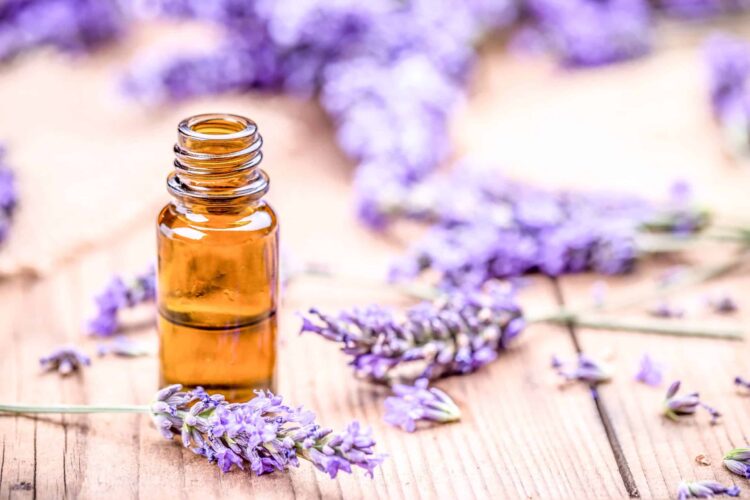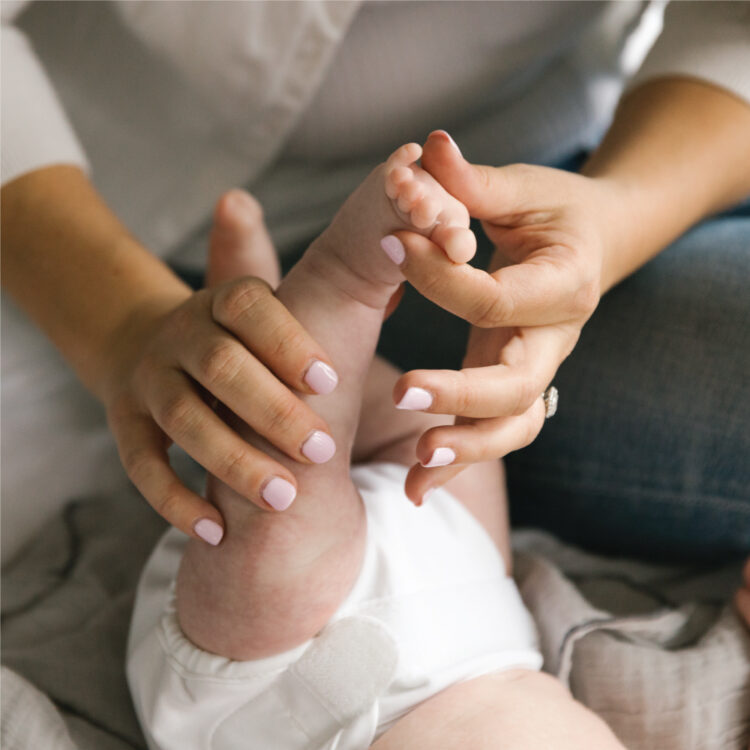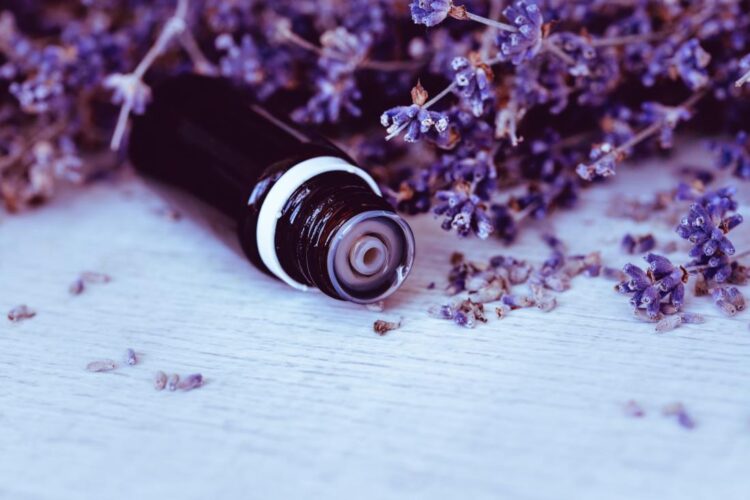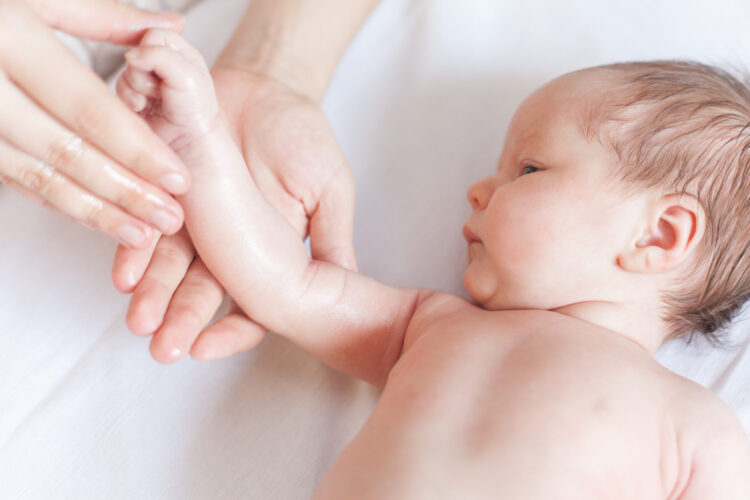EOs have become very popular over the years, and they can be easily found in many stores and pharmacies. Parents use these on their babies for a number of reasons. These oils can help improve sleep, reduce pain and stress, ease an upset stomach, and do so much more! It’s important to know how to use EOs safely.
What are Essential Oils?
They are concentrated oils extracted from the flowers, leaves and seeds of a plant. They can also be made from bark, roots, or peels of a plant. When you buy EOs, you need to know where they come from and what to look for when you buy them. Many companies are selling synthetic fragrances as EOs, so make sure to steer clear of them.
When you buy EOs, check the label to make sure it says the following things:
- Its name
- The plant is has been derived from (Its Latin name)
- The part of the plant that is used to make the oil
- Country where it is made
- How the oil was made
Is It Safe To Use Essential Oils On Babies?

When used properly, EOs can be safe and beneficial for infants. However, it is preferable to use edible, plant-based oils on a baby’s delicate skin, such as sweet almond oil, odorless coconut oil, and sesame oil. This is because infants often end up licking or sucking various regions of their bodies. Additionally, any type of smell might overstimulate the senses and the nervous system of a baby.
If you intend to use EOs on infants, it is recommended to get the advice of a certified aromatherapist or essential oil practitioner. Also, make sure to use an Essential oil diffuser that will evenly diffuse the smell across the room.
Children are more likely to have side effects than adults. If you don’t use EOs the right way, they can be dangerous for kids.
- Don’t put undiluted oils on your skin: Undiluted oils are not good for the skin. Dilutions that are safe for children usually range from 0.5% to 2.5%, depending on the child’s age and weight. To dilute the oil, add distilled water, or lotion in it.
- Don’t add undiluted oils to your bath water: This will make it smell bad. It could be bad for your skin because oil and water don’t mix well.
- Don’t consume these oils: EOs are concentrated oils that can be dangerous if swallowed.
- Don’t use too much oil:. Be careful about how much and how often you use it on your child. Do not use a lotion that has lavender in it and then apply an essential oil.
- Peppermint oil should not be used on children under 30 months old: If used on children under 30 months old, peppermint can cause seizures.
- Don’t use oils near a source of heat: EOs can start a fire if they are used near a source of heat.
- Do not buy oils from a bad source: Check the source of the EOs so you don’t get oils that might have contaminants. Credible companies tend to list the scientific name and source for their oils. They also provide a phone number on the package so you can ask them any questions you have.
- Sunlight can damage some EOs: Make sure to keep these oils away from sunlight. You should always read the warnings before you start to use it.
- Keep oils in a cool, dry place: They should be stored in a cool, dry place that isn’t in direct sunlight and isn’t near the reach of children.
- Do a patch test first: Before you use an oil on your child’s skin, apply it to a small area of skin and wait 24 hours to see if there is an allergic reaction..
- Do talk to an expert: Consult an expert if you have questions about how to use an oil or how much to use on your child.
Essential Oils for Treating Pain and Illness

Some clinical studies show that EOs can help with a lot of different things, and they can also make you feel better. Before you use them on your child, though, talk to your child’s doctor to make sure the oil you’re using doesn’t hamper your child’s medications.
Infants have delicate, permeable skin that is extremely sensitive to EOs. As a result, it is not recommended to use EOs on infants less than three months. When it comes to infants older than three months, consult an essential oil professional to determine whether a certain essential oil is appropriate for your baby or not.
When Should You Use Essential Oils?
- Anxiety: Lavender, chamomile, basil, and Frankincense can help people who are stressed.
- Nausea, Insomnia and tiredness: People who have nausea can try peppermint, ginger, and mandarin to help. Peppermint is best for children over 30 months old.
- Headaches. Peppermint can help children over 30 months old who have headaches.
- Insect spray: Basil oil has been used to keep bugs away. Citronella is a poison for bugs. If your child is younger than 6 months, don’t use this.
The Safest Ways to Apply Essential Oils
Call a doctor if your child has a skin rash or skin irritation. If your child has headaches or vomits, coughs, wheezes or trouble breathing, call your doctor. Use EOs only if you need medical help. Essential oils that have a powerful effect on children, especially infants, should be avoided until they are adults.
FDA in the United States and Health Canada have both said again and again that essential oils should not be ingested. Make sure not to use these oils in preparing the food of your child.
Final Word

Essential Oils are aromatic, concentrated oils derived from various plant parts such as leaves, flowers, seeds, barks, or fruits. Always use them under the supervision of a licensed herbalist or aromatherapy practitioner to ensure proper dosage and application procedures.
They have a variety of therapeutic and medical effects. While they can be used for aromatherapy and other purposes, you must be aware of some fundamental rules to avoid problems. When given in consultation with a professional, EOs can give some amazing benefits to infants. While EOs have medicinal characteristics, they should not be used as medications.






